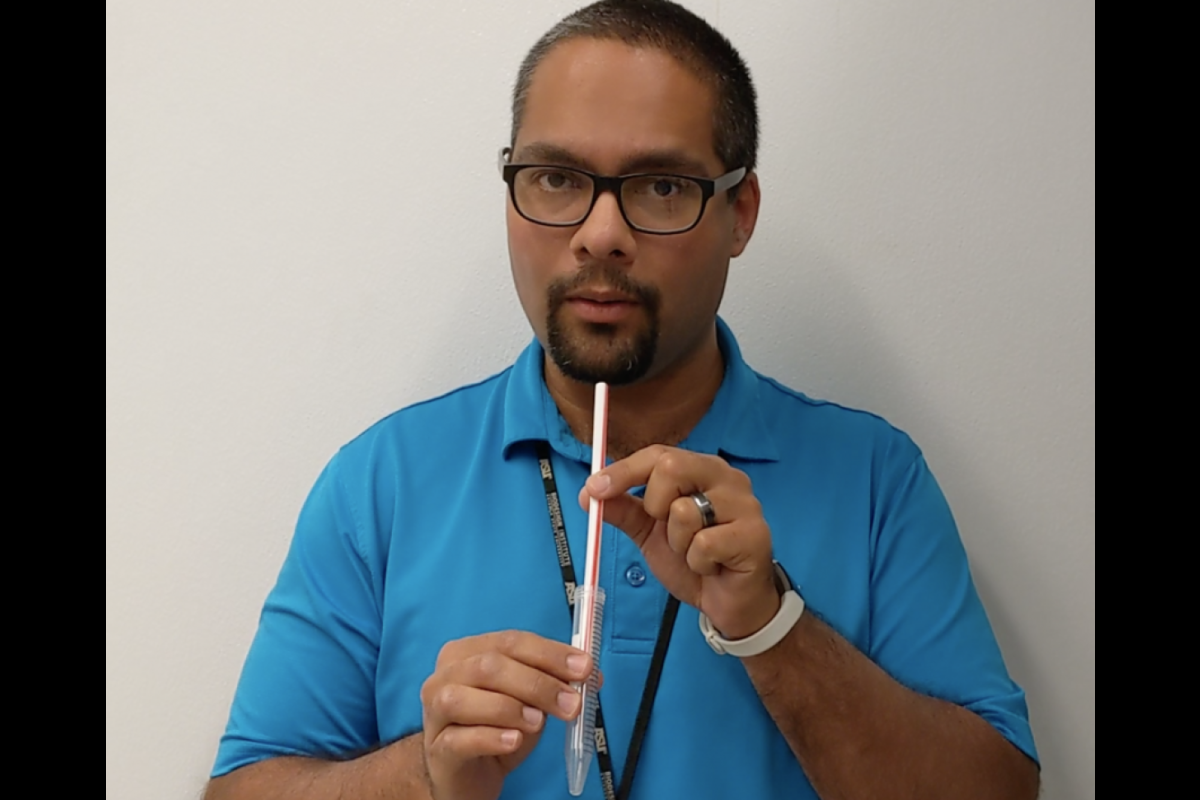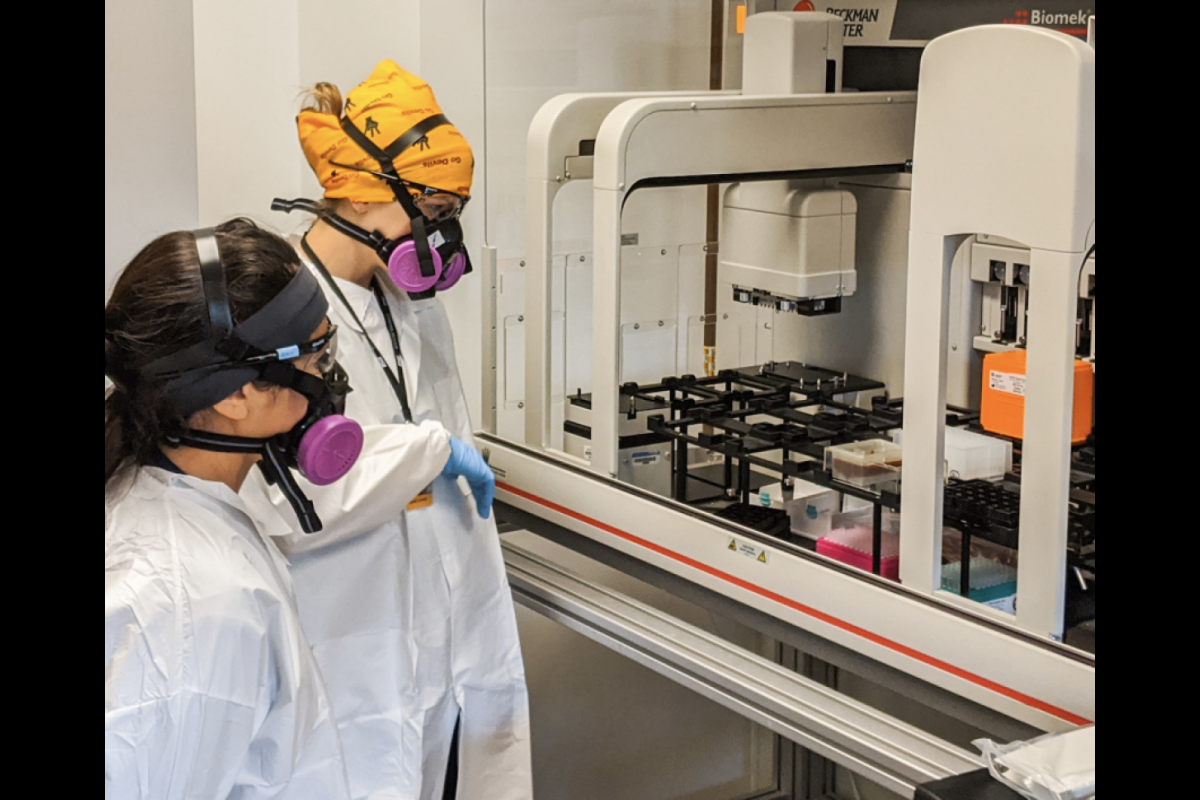Editor’s note: This story is being highlighted in ASU Now’s year in review. Read more top stories from 2020.
In an effort to make COVID-19 diagnostic testing easier and more readily available to Arizonans, researchers at Arizona State University have developed the state’s first saliva-based test.
“This new saliva-based test will be a real game-changer for those individuals who want to know whether or not they have an active COVID-19 infection,” said ASU Biodesign Institute Executive Director Joshua LaBaer, who leads ASU COVID-19 research efforts. “As we return to the workplace, schools and other daily activities, testing early and often is going to be the best way to help us prevent the spread of COVID-19.”
Diagnostic tests detect an active COVID-19 infection by measuring the amount of virus present in the body. Because it can take as long as eight to nine days for an individual to develop symptoms after infection, a diagnostic test is the only test that can accurately detect an early infection. But individuals with early infections can still spread the virus.
The saliva diagnostic test starts with a collection kit that is as simple as spitting into a screw-top tube through a straw, making collections possible at drive-thru sites, doctors' offices, the workplace, and even at home. This will not only make the supply chain of test kits easier to maintain, but could also help bring the cost of testing down.
“One of the bottlenecks with diagnostic testing has been the ability to quickly obtain samples,” LaBaer said. “Even with a highly-trained medical staff, medical providers have been limited to an average of 100 people with the nasopharyngeal (NP) swab collection in a four-hour window of drive-thru testing. The goal of the saliva tests was to overcome these obstacles.”
For the past couple of weeks, ASU’s Biodesign Institute has been pilot testing the saliva-based testing with its first responder partnership network. This was performed alongside nasal swab collections samples to validate, as well as reconfigure its high-throughput robotic instruments, which currently have enough capacity to perform 1,200 diagnostic tests per day.
“From those results, we found that the saliva-based tests were just as good, if not even better, as those collected from NP swabs,” LaBaer said.
LaBaer points out that saliva tests offer several benefits over the NP swab tests while providing the same accuracy and sensitivity, including:
• Accuracy: The Biodesign saliva test uses the same diagnostic qPCR assay as the NP swab tests and are 100% accurate if there is any detectable amount of virus present in the sample. Research shows that saliva tests are as just as sensitive as NP swabs for detecting SARS-CoV-2 infections. One study suggests that saliva tests may offer even greater sensitivity.
• Safety: NP swab tests pose a risk to health care workers because they can make people sneeze or cough. Saliva tests can be self-administered and require minimal interaction with test site staff.
• Less invasive: NP swab tests can be invasive and uncomfortable, reducing compliance for repeat testing. Saliva tests are minimally invasive and thus easier to gather a sample from participants.
• Less PPE: NP swab kits and the personal protective equipment (PPE) needed to administer them are in short supply. Saliva tests require less PPE during sample acquisition.
• Less labor intensive: Saliva tests eliminate the need for swab kits, reduce the amount of PPE required, and reduce the amount of staffing needed at COVID-19 sample collection sites.
ASU’s Biodesign Institute will pivot its current diagnostic testing of first responders to switch its entire NP swab collection protocols for the new saliva-based kits. The Biodesign Institute has also applied for FDA Emergency Use Authorization for the test and will make its protocols readily available for other commercial and academic partners so they can adapt their instruments to perform saliva-testing.
“The goal is to rapidly increase statewide diagnostic testing to continue to protect first responders, get more Arizonans back to work, and students back to school again this fall,” LaBaer said. “Ultimately, we are going to need to continue the testing blitz underway and quickly ‘test, trace and isolate’ individuals to get society back up and running.”
Top photo: Diagnostic tests, like the ones performed at the ASU Biodesign Institute's Clinical Testing Lab, detect an active COVID-19 infection by measuring the amount of virus present in the body. Photo courtesy ASU.
More Science and technology

Turning up the light: Plants, semiconductors and fuel production
What can plants and semiconductors teach us about fuel production?ASU's Gary Moore hopes to find out.With the aim of learning how to create viable alternatives to fossil-based fuels, Moore — an…

ASU technical innovation enables more reliable and less expensive electricity
Growing demand for electricity is pushing the energy sector to innovate faster and deploy more resources to keep the lights on and costs low. Clean energy is being pursued with greater fervor,…

What do a spacecraft, a skeleton and an asteroid have in common? This ASU professor
NASA’s Lucy spacecraft will probe an asteroid as it flys by it on Sunday — one with a connection to the mission name.The asteroid is named Donaldjohanson, after Donald Johanson, who founded Arizona…





